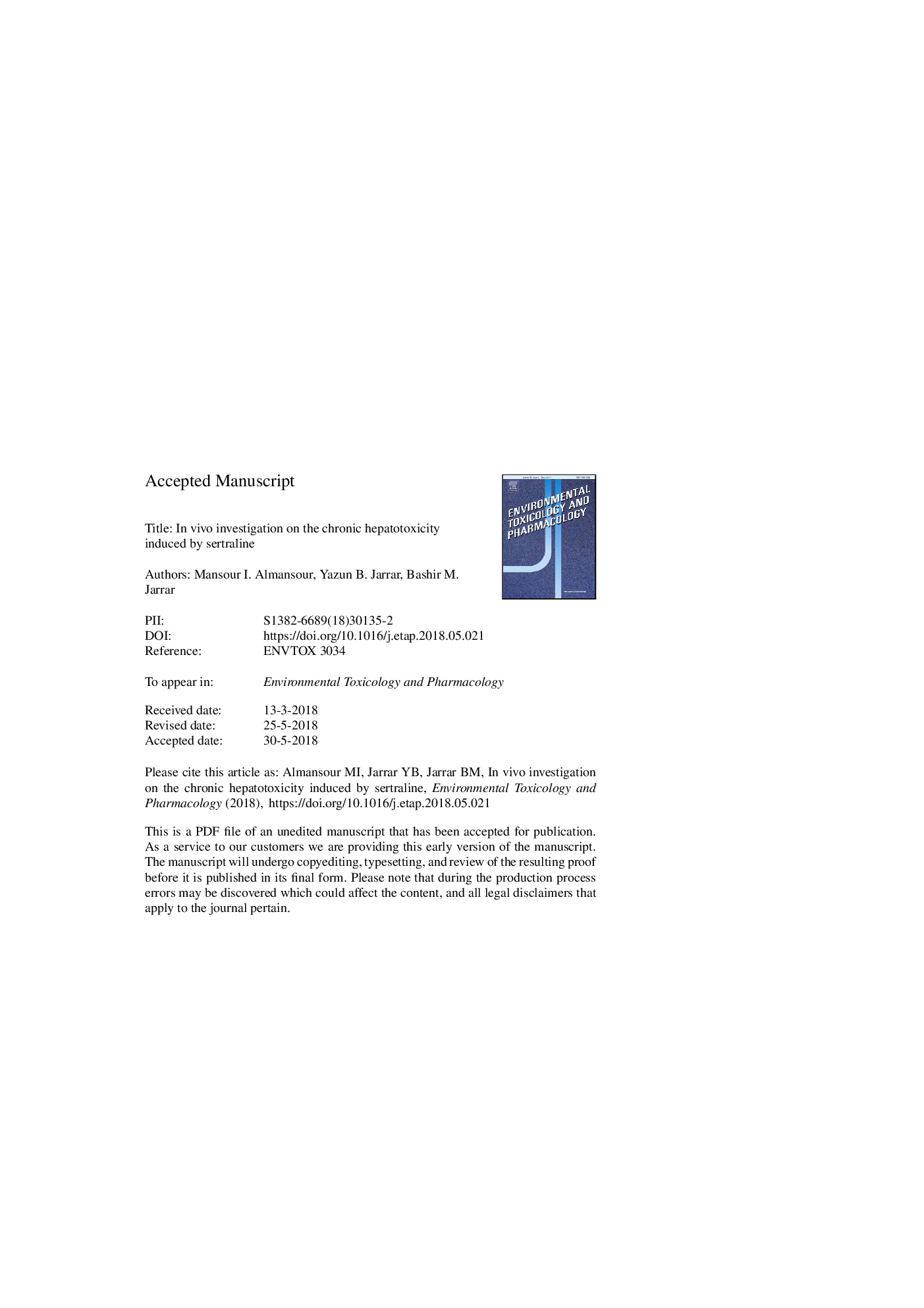| Article ID | Journal | Published Year | Pages | File Type |
|---|---|---|---|---|
| 8545803 | Environmental Toxicology and Pharmacology | 2018 | 31 Pages |
Abstract
Although sertraline is widely prescribed as relatively safe antidepressant drug, hepatic toxicity was reported in some patients with sertraline treatment. The present study was conducted to investigate the morphometric, hepatotoxicity, and change in gene expression of drug metabolizing enzymes. Male healthy adult rabbits (Oryctolagus cuniculus) ranging from 1050 to 1100â¯g were exposed to oral daily doses of sertraline (0, 1, 2, 4, 8â¯mg/kg) for 9 weeks. The animals were subjected to morphometric, hepatohistological, histochemical and quantitative real-time polymerase chain reaction analyses. Sertraline chronic exposure induced morphometric changes and provoked histological and histochemical alterations including: hepatocytes hydropic degeneration, necrosis, nuclear alteration, sinusoidal dilation, bile duct hyperplasia, inflammatory cells infiltration, portal vessel congestion, Kupffer cells hyperplasia, portal fibrosis and glycogen depletion. In addition, the gene expression of drug and arachidonic acid metabolizing enzymes were reduced significantly (p value <0.05). The most affected genes were cyp4a12, ephx2, cyp2d9 and cyp1a2, demonstrating 5 folds or more down-regulation. These findings suggest that chronic sertraline treatment induced toxic histological alterations in the hepatic tissues and reduced the gene expression of drug metabolizing enzymes. Patients on chronic sertraline treatment may be on risk of hepatotoxicity with reduced capacity to metabolize drugs and fatty acids.
Keywords
Related Topics
Life Sciences
Environmental Science
Health, Toxicology and Mutagenesis
Authors
Mansour I. Almansour, Yazun B. Jarrar, Bashir M. Jarrar,
